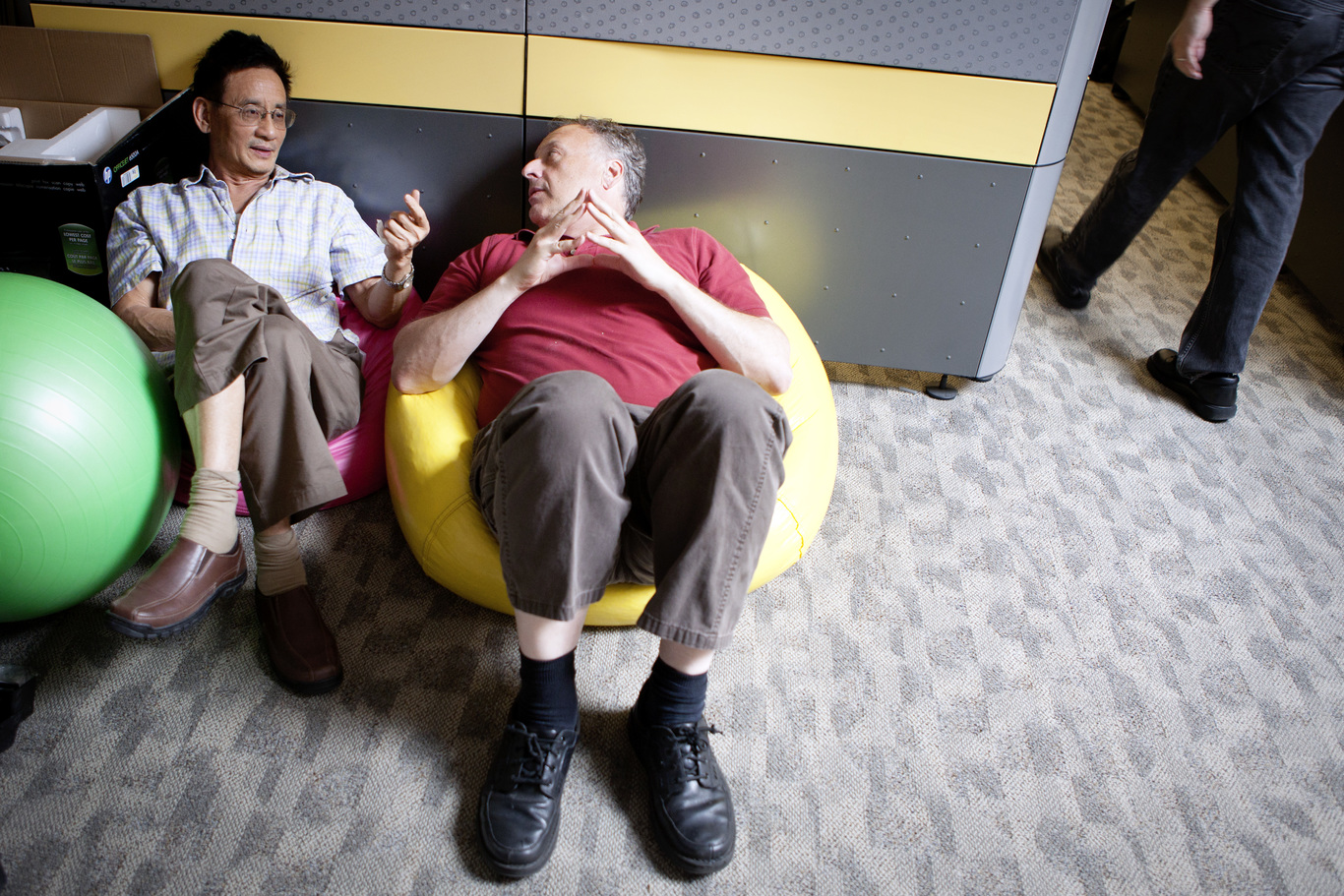'Add as many bean bags as you like, if people don't like what you stand for you've already lost'
These are the steps businesses should take to prepare for the future of work.
TECHNOLOGY IS already a major disruptor in business. Facebook is the largest publisher and it produces no content. Uber is the largest car company and it possess no cars. Airbnb is the largest hotel chain yet it owns no hotels.
Not only that, these brands are all relatively new and highlight the pace of change in business through technology. Coupled with this, robots, machines and artificial intelligence have already become more mainstream, all of which will affect the jobs market.
More and more jobs are being taken over by machines, and it is not just low-skill jobs. The goal of IBM’s Watson supercomputer is to be the world’s best doctor.
These technological challenges are both a threat and an opportunity for employers, but companies can only truly take advantage of the potential technology has to offer if it has the best people by their side.
People are more than ever your competitive advantage and they lie at the heart of the future of work. But how can companies keep pace with change while also making sure their talent is happy, engaged and aligned to their company?
The future is building your brand
If you want to win the battle for talent you’ll need to look at your culture first. The best definition of company culture is: what do people say when their boss leaves the room? You can add as many hammocks and bean bags as you like, but if people still have a negative view of your brand and what it stands for then you’ve already lost.
If we need any confirmation about how vital your employer brand will be in attracting the best and keeping them then look no further than the millennials – the generation born between 1980 and 2000.
The majority of the workforce will be comprised of millennials by 2030. For them, values trump salary. Half would take a pay cut to find work that matches their values.
Recently, the CEO of Under Armour, Kevin Plank, came out in support of US President Donald Trump’s policies. In response, several of the brand’s stars took to social media to distance themselves from the comments and #BoycottUnderArmour quickly trended on Twitter.
A CEO’s comments have a significant impact on the employer brand. Millennials are especially drawn to workplaces that champion diversity and inclusion. As a result, some may find it difficult to work for a company whose CEO openly supports an administration that doesn’t prioritise such values.
The future is diversity
Diversity is becoming more of a talking point in business. This is because research categorically outlines that diverse companies have higher profits and more engaged employees, who produce better innovation.
But diversity of talent is difficult to achieve for many reasons. One is unconscious bias. We all make unintentional assumptions about other people based on their gender, age or culture. We like to think that we make hiring decisions objectively, but the research shows us that we don’t.
In one study, Yale University asked science researchers to assess two identical CVs for a lab manager role. Both had the same qualifications, but one was male, the other female. The researchers all came back with the same response: they judged the male candidate to be more competent and would pay him more.
It’s not just gender parity that organisations should aim for, but also an age-neutral workforce because ageism is an unfortunate reality for many.
We found that two-thirds of staff are uncomfortable dealing with older workers. This is something that companies are going to have to tackle, and quickly, because by 2030 the percentage of older workers in the global workforce is expected to rise to 22%.
BMW listened to their older factory workers and asked them what changes they would like to see to help their work. They highlighted a more forgiving work floor, better lighting and larger fonts, and these small changes led to an almost 10% increase in productivity.
The future is employee focused
How do you build and sustain an innovative culture? Start with your employees’ workloads and pressures.
Are they valued? Are they trusted? Are they inspired? Everything from your employer brand to how you support their day-to-day lives will help to inspire innovation and keep them engaged.
According to the Aviva Workplace Health Index, about one-third of employers in Ireland cited ‘presenteeism’ as a major concern for their business. This is a workplace culture where employees are pressured to be present in the office when they could be more productive elsewhere.
Sweden recently implemented a six-hour working day for nurses in an experiment to test its efficacy. The result? The nurses took half as many sick days as those in the control group and were 2.8 times less likely to take any time off in a two-week period.
They were 20% happier and had more energy at work and in their spare time. So, paying attention to your workers’ health and well-being is important.
Imagine the possibilities of a well-rested and happier workforce. Considering many of us get our best ideas outside the office, isn’t it worth helping to foster a better work-life balance and happier working environment?
If you look to the most successful and enduring brands and you’ll find one common denominator – great people. A company’s competitive advantage is undoubtedly its staff.
Peter Cosgrove is director of CPL Resources and founder of the Future of Work Institute in Ireland.
If you want to share your opinion, advice or story, contact opinion@fora.ie.






